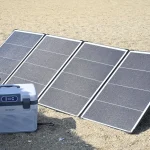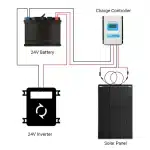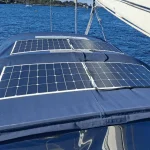The majority of the people who are keen on living off the grid know the basics of solar energy. solar panels and a battery system co-operate to draw and store power from the sun to give heat, cool air and power when it’s required. However, there’s one more key part of an off-grid solar energy system and that is solar charge controller.
Assuming you are uncertain what solar charge controller is, you have come to the ideal place. In this article, we will make sense of what you want to be familiar with solar charge controllers: What are the types of solar charge controllers, how they work and why you could require one.
Solar Controller
A Solar charge controller is a device used to charge a battery by regulating and controlling the flow of electricity from the solar panels to the battery. Its main functionality is to regulate the voltage and current from the solar panels in order to avoid the overcharging and also over-discharging of the battery.
Sometime, solar panels collect more power than the attached battery can manage, and that can damage the battery.
Similarly, in cloudy weather conditions when solar panels do not gather enough energy, the stored energy from batteries could flow to solar panels and cause damage to the solar panels.
Thus, solar charge controller is used to allow the flow of energy in only one direction and avoid the overcharging and also over-discharging of the battery.
Types of solar charge controller
Generally, there are four types of solar charge controllers, categorized by the strategy used to direct the charge from the solar modules to the batteries.
- Shunt type charge controllers.
- Series type charge controllers.
- Pulse-width modulation (PWM) solar charge controllers.
- Maximum power point tracking (MPPT) solar charge controllers.
Shunt Type Solar Charge Controller
These were the early type of solar charge controllers developed and are the simplest ones still available on the market nowadays. The solar panel is short-circuited to avoid further power flow when the battery is fully charged.
This type of solar charge controller is low cost, reliable and has a simple design most suitable for small off-grid PV systems.
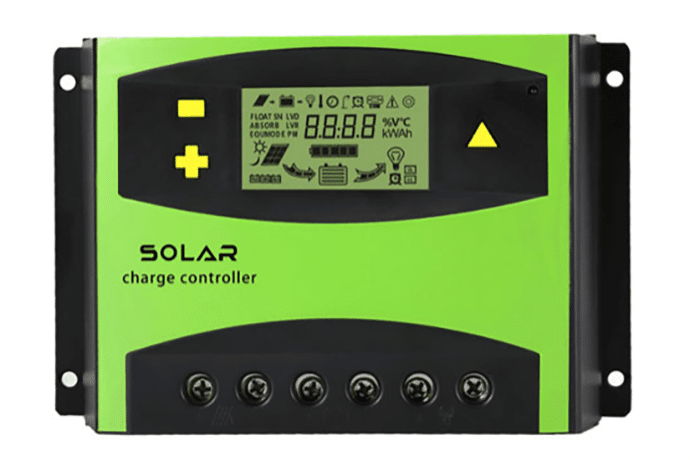
Series Type Solar Charge Controller
Series-type charge controller is basically the same as shunt-type solar charge controller, yet rather than short circuiting the solar panels output, they open the circuit, intruding on the way to the batteries. For the disconnection of the circuit, this kind of charge controller uses a relay or a solid-state switch. After the batteries arrive at a set voltage level, the solar panels are disconnected from the batteries. At the point when the battery SOC decreases, the switch is reset, and the solar panel is reconnected to the battery.
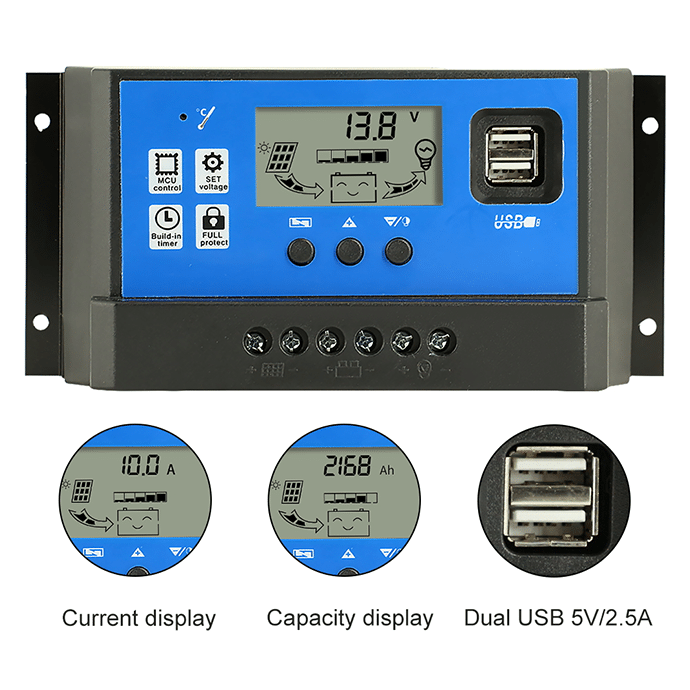
Pulse-width modulation (PWM) solar charge controllers
PWM stands for pulse width modulation. PWM type solar charge controller used to be a very popular type of solar charge controller in the 90’s.
PWM charge controllers are like series-type solar charge controllers but instead of using a relay, they use a transistor to open the array. A constant voltage can be maintained by switching the transistor at a high frequency with various modulated widths. The PWM-type controllers self-adjust by changing the widths and speed of the pulses sent to the battery. Dissimilar to the on/off charge controller which instantaneously cut off the power flow to limit battery overcharging, PWM controllers behave like a fast on/off regulator continually.
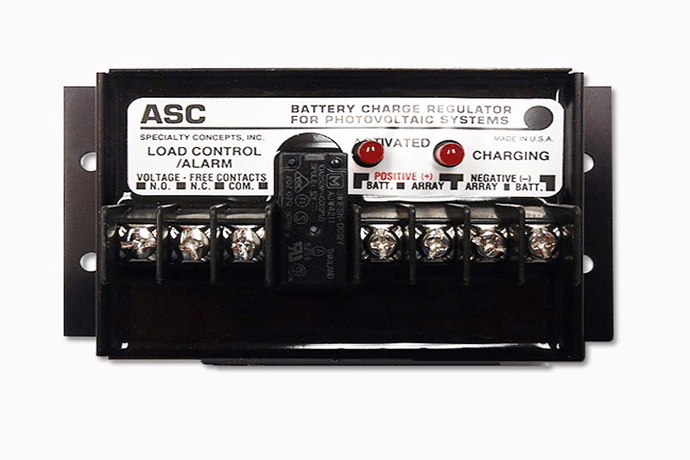
Maximum power point tracking (MPPT) solar charge controllers
The Maximum Power Point Tracking (MPPT) solar charge controller takes the PWM to the next level, by allowing the solar array voltage to vary from the solar battery voltage.
The MPPT solar controllers are DC–DC converters, supplying a matching interface between the PV solar panels and the battery system. The main functionality of the MPPT solar controller is to change the solar panels output in order to transfer maximum energy to the batteries.
The MPPT charge controller guarantees that the load receives maximum current to be utilized (by rapidly charging the battery).
Regarding the electrical specifications of MPPT solar charge controller, four important parameters should be kept in mind: the nominal battery voltage, the number of MPPT inputs, the input voltage and the shade-tolerant MPPT.
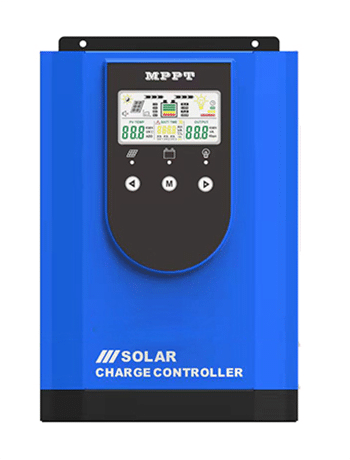
Basic Working principles of a MPPT solar charge controller
The Basic Working principle of a MPPT solar charge controller is defined in three steps.
- Step 1:The MPPT solar charge controller ceaselessly gauges the voltage and current output of the solar panels. It then computes the power (P = V x I) at different voltage levels to find where the solar panels generate the maximum power.
- Step 2:The MPPT solar charge controller analyzes the determined power levels and chooses where the maximum power is being produced. This point is considered as the Maximum power point (MPP).
- Step 3:Once the Maximum power point (MPP) is determined, the MPPT solar charge controller changes the voltage and current provided to the batteries or inverter to match the ideal levels, guaranteeing the solar panels works at their maximum efficiency.
Advantages of MPPT solar charge controller
There are several benefits of using MPPT solar charge controller in a solar power system.
- MPPT solar charge controller are significantly more efficient as they can increase energy production by up to 30% compared to PWM controllers or other types of solar charge controllers.
- MPPT type solar controller can adjust to changing weather patterns, temperature, and shading effects, guaranteeing the solar panels reliably work at their Maximum Power Point (MPP).
- MPPT solar charge controller enables quicker battery charging, thus decreasing the time expected to fully charge a battery.
- MPPT solar controllers help extend the lifespan of batteries in the solar system by delivering the right voltage and current levels.
- MPPT solar charge controller ensures the production of most of the electricity possible thus maximizes the return on your investment in the solar panels.
Applications
MPPT solar charge controller can be used in various applications, including:
- They can be used in residential solar systems to maximize the solar panel’s output thus reducing the energy bills and contributing to a more sustainable future.
- MPPT solar charge controllers are necessary for off-grid solar applications such as remote locations and cabins etc. where a reliable power source is most needed.
- MPPT solar charge controller also enhances the energy production in grid connected solar systems, thus helping owners benefit from net metering technology.
- They are also used in solar systems used for agricultural and telecommunication purposes, to provide a reliable energy supply in remote or off grid locations.
Conclusion
In the pursuit of utilizing the full production of solar energy, the selection of components is of prime importance. Solar charge controllers, especially MPPT-type solar charge controllers are key components in any solar energy system, that enable you to maximize energy production and achieve maximum efficiency. When considering solar energy solutions, it’s most important to partner with a company that is not only an expert in MPPT charge controllers but also solar panels and other solar energy system-related components.
For an extensive and consistent solar energy experience, we energetically suggest Sungold Solar Company. With their top-level expertise in manufacturing solar panels, solar charge controllers, and a variety of solar energy parts, they offer a one-stop solution for all your solar needs. Trust in their obligation to development, quality, and sustainability to push your solar venture towards a brighter and greener future.




